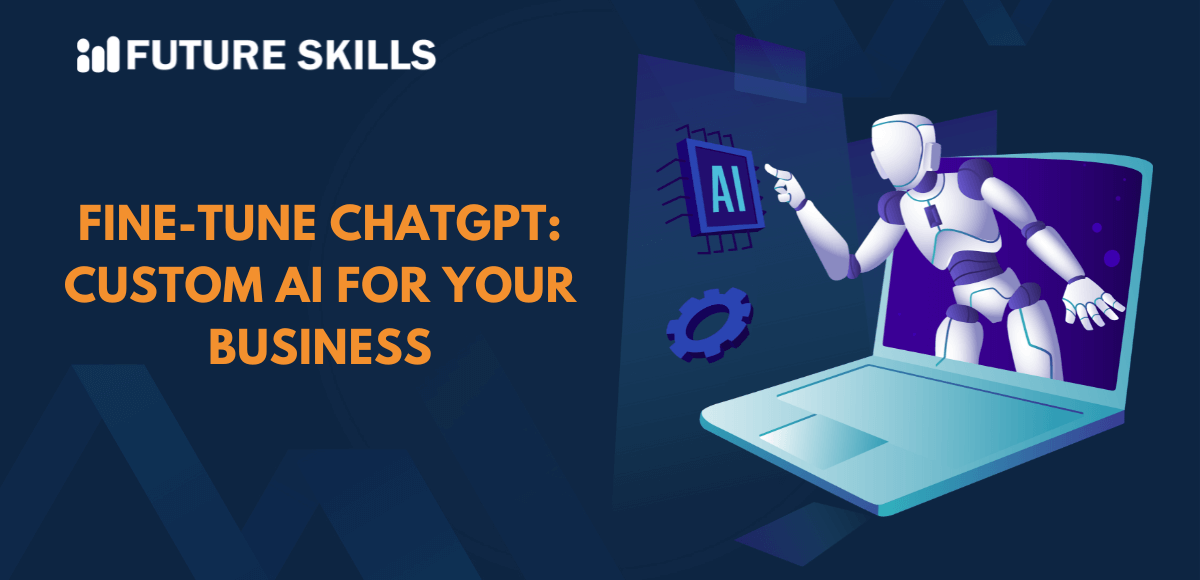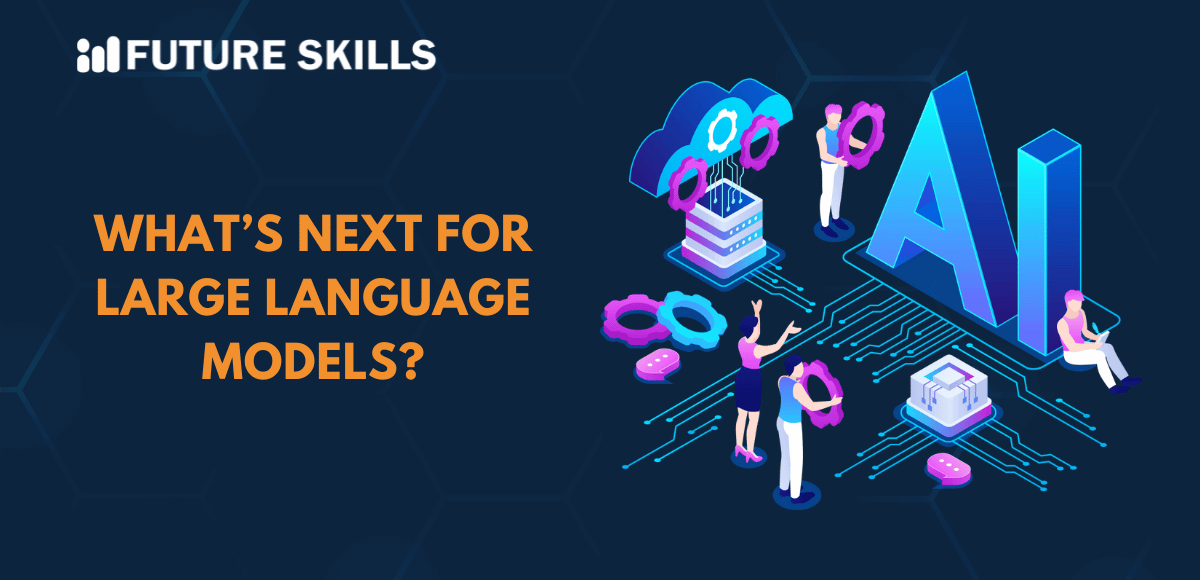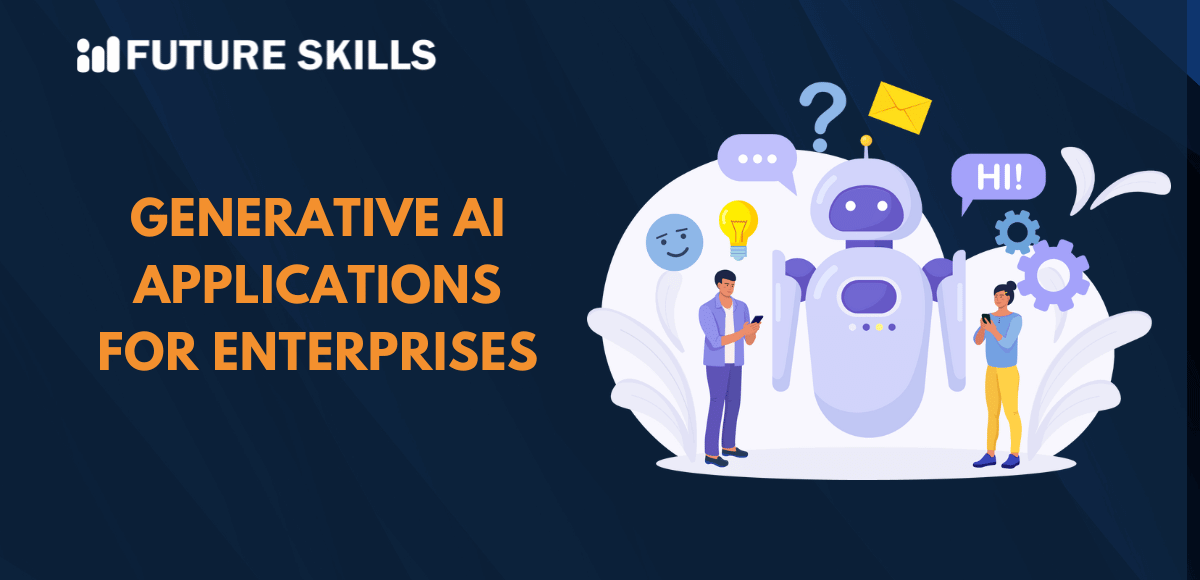Large language models or LLMs have become one of the most trending topics in the domain of technology since the arrival of ChatGPT. You must have heard of different applications of ChatGPT in the business landscape with their unique advantages. Business organizations used ChatGPT for creating marketing content or streamlining the customer service experience. The option to fine tune ChatGPT for business tasks in special circumstances provides the advantage of using ChatGPT according to your specific needs. Let us unravel the reasons for optimizing the popular generative AI tool and the best practices for fine-tuning.
Make the most of ChatGPT and unlock new career prospects with our highly trusted ChatGPT Certification Course. Enroll today!
Discovering the Significance of Fine-tuning
The first thing that you must learn to implement ChatGPT fine-tuning is the importance of the process. With a broad array of powerful functionalities, it is reasonable to wonder whether ChatGPT really needs fine-tuning. The primary goal behind fine-tuning ChatGPT models revolves around extracting more useful output from the models. Fine-tuning can help you obtain higher quality results as compared to prompting with fewer latency requests. Fine-tuning also enhances the ability for training on more examples and saves tokens by shortening prompts.
OpenAI ChatGPT models are pre-trained using a huge collection of text in their training dataset. You can use the models effectively by using instructions and different types of examples in prompts. One of the common techniques used to show a model how to perform a specific task is few-shot learning.
The concept of fine-tuning comes from few-shot learning as it involves training the model on more examples than you can fit in a prompt. Therefore, fine-tuning can help you achieve better results on a wide range of tasks. It is also important to remember that fine-tuned models don’t need a lot of examples in the prompt. As a result, fine-tuning can help in saving cost alongside promoting requests for low latency.
High-level Overview of Fine-tuning Process
You might have doubts like ‘Can I train ChatGPT for my business?’ before you think about fine-tuning it. The high-level overview of the fine-tuning process can provide a general impression of what you have to do in the process. The first step involves preparing and uploading the training data for fine-tuning. In the next step, you must focus on training a new fine-tuned model and evaluate the results to find areas for improvement.
Another important concern in a high-level overview of the fine-tuning process is the availability of support for fine-tuning. You can find different ChatGPT models suitable for fine-tuning to work on different business tasks. You can fine-tune the GPT-4o, GPT-4o mini and GPT-3.5 Turbo models. One of the important things that you should keep in mind is the possibility for fine-tuning a fine-tuned model. OpenAI believes that GPT-4o mini might be the best model for fine-tuning for its ease of use, performance and cost.
Ideal Scenarios for Fine-tuning OpenAI ChatGPT Models
The most common intention behind fine-tuning the different ChatGPT models focuses on making them better for specific business applications. At the same time, you must know that the process to fine tune ChatGPT on your own data requires a lot of effort and time. Experts at OpenAI recommend that you should go for fine-tuning after trying out prompt engineering, prompt chaining and function calling.
You may wonder about the reasons for trying other methods before fine-tuning. First of all, you may have some tasks in which ChatGPT models may not perform well in the beginning. With the right prompts, you can obtain better results from such models thereby cancelling the need for fine-tuning. You can also come across scenarios in which iterating over prompts provides a faster feedback loop than iterations with fine-tuning.
The applications of fine-tuning can help in achieving better results in certain use cases. You can opt for fine-tuning OpenAI ChatGPT models when you want to improve reliability of models for producing specific outputs. Fine-tuning is also useful in scenarios where you must set the style, format, tone and other qualitative elements.
It is also important to note that fine-tuning is recommended for amending failures in following complex prompts and managing different edge cases in certain ways. The most common use case where you can implement fine-tuning for OpenAI ChatGPT models involves performing a new task that is difficult to describe in a prompt.
Our Certified AI Professional (CAIP)™ Course will help you learn the core concepts and advanced techniques of AI in just four weeks. Start your AI journey today!
How to Create Fine-tuned ChatGPT Models for Your Business?
Fine-tuning is all about optimizing ChatGPT models to improve their performance on new tasks or a subdomain of existing tasks. ChatGPT may not always serve the results you expect in certain business use cases. The massive training dataset of ChatGPT creates limitations in the type of responses you can get for specific tasks, such as ambiguity. You can retrain the model on smaller datasets built for specific business use cases to help it understand the nuance of the task it has to perform.
You can fine tune ChatGPT and maximize its potential for your business with diverse benefits. At the same time, you must pay attention to the important prerequisites to ensure successful fine-tuning of ChatGPT models. The following steps in the fine-tuning process can help you achieve desired results in various business tasks.
-
Establishing the Objectives
The first step for fine-tuning OpenAI ChatGPT models for business tasks involves identification of business goals. You must provide clear and specific definitions for business problems or the improvements you want to achieve with a fine-tuned model. It is also important to define the use cases for the model along with an outline of performance metrics that can help you measure the success of fine-tuning.
-
Data Collection and Preparation
The overall objective of fine-tuning focuses on training an existing pre-trained model on a limited dataset. You would need relevant data that aligns with your desired objectives and diverse data points from different sources can help you enrich the dataset for fine-tuning. The process to fine tune ChatGPT for business use cases also requires comprehensive data preparation with the help of data cleaning and formatting. In some cases, you might have to provide labels to the data to obtain more accurate results from fine-tuned models.
-
Create the Environment for Fine-tuning
The next step of fine-tuning involves setting up the environment by installing essential dependencies. The important dependencies include infrastructure resources, libraries and frameworks required for fine-tuning. In terms of infrastructure, you have to focus on computational resources such as cloud-based solutions or GPUs.
The essential libraries and frameworks for the process include Python, Hugging Face Transformers and PyTorch alongside other dependencies. You must also create a virtual environment that can help you in managing dependencies and a version control system for tracking changes and collaborating with different team members.
-
Selection of Pre-trained ChatGPT Models
You can find multiple ChatGPT models for fine-tuning in the OpenAI library. The decision for fine-tuning ChatGPT models also calls for choosing the ideal pre-trained model for your needs. You should consider different factors such as model size, licensing requirements and performance to pick the most effective model for desired use cases.
The other crucial factors that you must consider during the selection of a pre-trained ChatGPT model for fine-tuning include domain relevance, fine-tuning efficiency and inference speed. Most important of all, you must pay attention to possible presence of biases in the pre-trained models.
-
Fine-tuning the Selected ChatGPT Model
The fine-tuning process begins with training the pre-trained model on the data you have prepared for the desired tasks. You have to configure the hyperparameters such as learning rate and batch size before implementing transfer learning techniques. One of the common things about all fine-tuning processes is the need to freeze most of the parameters and updating only a small subset. On top of it, you must also try other fine-tuning approaches to achieve better efficiency while reducing computational requirements.
-
Evaluation and Iteration of Fine-tuning
The ideal approaches to find answers to questions like ‘Can I train ChatGPT for my business?’ for different applications shed light on the iterative nature of fine-tuning. You have to repeat the process again according to the feedback on performance of the model. The feedback loop can help you obtain feedback from stakeholders and end-users to understand the performance of the model. Subsequently, you can use the feedback to fine-tune the model with new hyperparameters, additional data or implementing different changes.
Get to know how you can use AI in your business strategies and overcome challenges with our AI for Business Course.
Final Thoughts
The goal of fine-tuning revolves around achieving desired performance from ChatGPT models. The massive dataset of ChatGPT makes it one of the powerful generative AI models in the market. You can fine tune ChatGPT according to your needs on restricted datasets to use its capabilities for special use cases. One of the most crucial advantages of fine-tuning is the assurance of improving relevance of the model to the specific business applications.
While ChatGPT fine-tuning may seem to be a promising solution, you must also keep an eye on the challenges. You must collect and prepare the dataset required to fine-tune a pre-trained model for certain business use cases. Another crucial concern during fine-tuning is the possibility of biases in the pre-trained models. Learn more about fine-tuning and discover its advantages for businesses ready to embrace AI right now.







